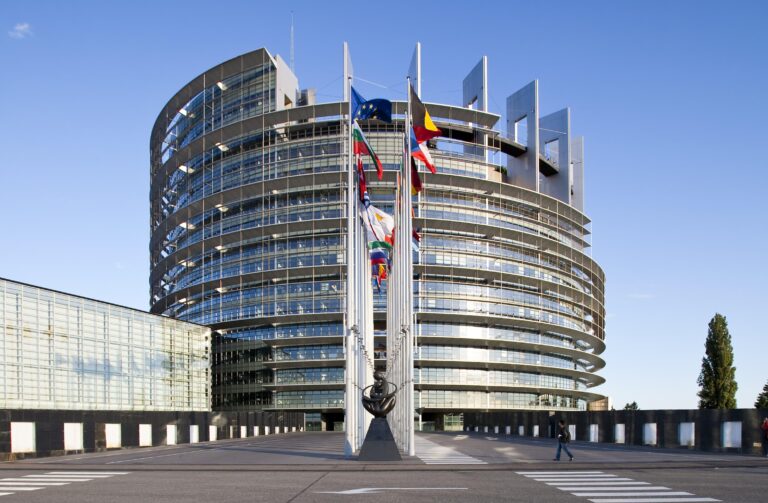What You Need to Know Before Visiting the European Parliament in Strasbourg
As the heart of European democracy, the European Parliament in Strasbourg welcomes millions of visitors each year, eager to witness the institution where vital decisions shape the continent’s future. However, before stepping through its historic doors, it’s essential to understand the nuances of visiting this iconic site. From essential visitor protocols to navigating the building’s vibrant atmosphere, this guide will provide you with everything you need to know to make the most of your trip. Whether you’re a history buff, a political enthusiast, or simply curious about the workings of the EU, being informed will enhance your experience in this architectural marvel and hub of international dialogue.
Essential Visitor Information for the European Parliament in Strasbourg
Planning a visit to the European Parliament in Strasbourg? It’s crucial to be well-prepared to make the most of your experience. Here are some essential points to consider:
- Opening Hours: The Parliament is open to visitors from Monday to Friday, but hours may vary depending on sessions. Always check the official schedule before your visit.
- Entry Requirements: Valid identification, such as a passport or national ID, is mandatory for entry. Ensure your documents are up to date.
- Guided Tours: Free guided tours are available, but booking in advance is recommended, especially during busy periods. Tours offer insights into the legislative process and the building’s architecture.
- Accessibility: The Parliament is accessible to individuals with reduced mobility. Special assistance can be arranged upon request.
In addition to these practical tips, visitors can also partake in various interactive exhibitions, which are designed to educate the public about the workings of the European Union. Check out the Visitor Centre for exhibitions that feature thematic displays and current EU projects. Here’s a quick overview of what you might find:
| Exhibition Theme | Description |
|---|---|
| History of the EU | Discover the milestones that shaped the union. |
| Cultural Heritage | Explore the diverse cultures that make up Europe. |
| Current Challenges | Engage with pressing issues facing the EU today. |
Understanding the Parliament’s Structure and Functions
Understanding the structure of the European Parliament in Strasbourg is essential for anyone looking to engage with European politics. The Parliament is composed of 705 Members of the European Parliament (MEPs), who represent the interests of citizens across the EU. They are organized into various political groups based on their ideological affiliations, fostering collaboration on important legislation. The Parliament’s key functions include shaping laws, scrutinizing the executive, and addressing constituent concerns, all within a framework that values democratic debate and transparency.
In addition to legislative duties, the European Parliament plays a crucial role in overseeing the EU budget and ensuring accountability. This body is structured around several essential committees, each responsible for specific policy areas such as foreign affairs, environment, and economic affairs. These committees not only prepare legislative proposals but also host public hearings that invite expert opinions and feedback from citizens. This proactive approach ensures that a diverse array of voices contributes to the decision-making process.
| Key Functions | Description |
|---|---|
| Legislation | Proposing, amending, and voting on European laws. |
| Oversight | Monitoring the work of the European Commission and other institutions. |
| Budgetary Control | Approving and scrutinizing the EU budget. |
| Representation | Advocating for citizens’ interests in the EU policy landscape. |
Navigating the Security Protocols and Entry Requirements
Before heading to the European Parliament in Strasbourg, visitors should familiarize themselves with the essential security protocols and entry requirements. Upon arrival, all guests must present a valid form of identification, such as a passport or national ID card. It’s important to note that security checks are thorough, comparable to those at airports, and can involve metal detectors and bag scans. To expedite this process, visitors are encouraged to arrive early, especially during peak tourist seasons.
In addition to identification, attendees should consider the following points:
- Advance Booking: Many tours require prior reservation, which can be done online. This helps avoid long wait times.
- Prohibited Items: Be aware that items like sharp objects, large bags, and liquids are not allowed. A detailed list can be found on the Parliament’s official website.
- Dress Code: While there is no formal dress code, appropriate clothing is expected, reflecting the dignity of the institution.
For a clearer understanding, here’s a quick overview of the essential entry requirements:
| Requirement | Details |
|---|---|
| Identification | Valid passport or national ID card |
| Security Check | Metal detectors and bag scans in place |
| Tour Booking | Advance booking recommended for guided tours |
Exploring Nearby Attractions for a Complete Visit Experience
While your visit to the European Parliament in Strasbourg is sure to be enlightening, don’t miss the chance to explore the surrounding attractions that make the city a vibrant destination. Begin your adventure at the iconic Grande ĂŽle, a UNESCO World Heritage site, where you can wander through picturesque streets lined with half-timbered houses. Don’t forget to stop by Strasbourg Cathedral, renowned for its stunning Gothic architecture and intricate astronomical clock, which draws visitors from around the world. Additionally, immerse yourself in the arts at the Palais Rohan, which hosts three museums showcasing decorative arts, archaeology, and fine arts.
For a more leisurely experience, the Parc de l’Orangerie offers a serene escape just a short walk from the Parliament. This expansive park features scenic walking paths, a lake, and even a small zoo – perfect for families. If you’re interested in local cuisine, the Petite France district is filled with delightful bistros and cafes that serve traditional Alsatian dishes. Make sure to try the famous tarte flambĂ©e while taking in the beautiful canal views. Below is a quick reference table for easy planning:
| Attraction | Type | Distance from Parliament |
|---|---|---|
| Grande ĂŽle | Historical Area | 1 km |
| Strasbourg Cathedral | Architectural Marvel | 1.5 km |
| Palais Rohan | Museum | 1.2 km |
| Parc de l’Orangerie | Park | 1.6 km |
| Petite France | Culinary Experience | 1 km |
Insights and Conclusions
As you prepare for your visit to the European Parliament in Strasbourg, understanding the institution’s significance and operational intricacies will enhance your experience. From the historical context of its location to the logistical details of tours, being informed helps demystify the legislative process at the heart of Europe. Whether you’re a first-time visitor or a seasoned traveler, engaging with the European Parliament offers a unique opportunity to witness democracy in action. Plan ahead, respect the regulations, and take advantage of guided tours to make the most of your visit. With careful preparation, your experience at this pivotal European institution promises to be both enlightening and memorable.




